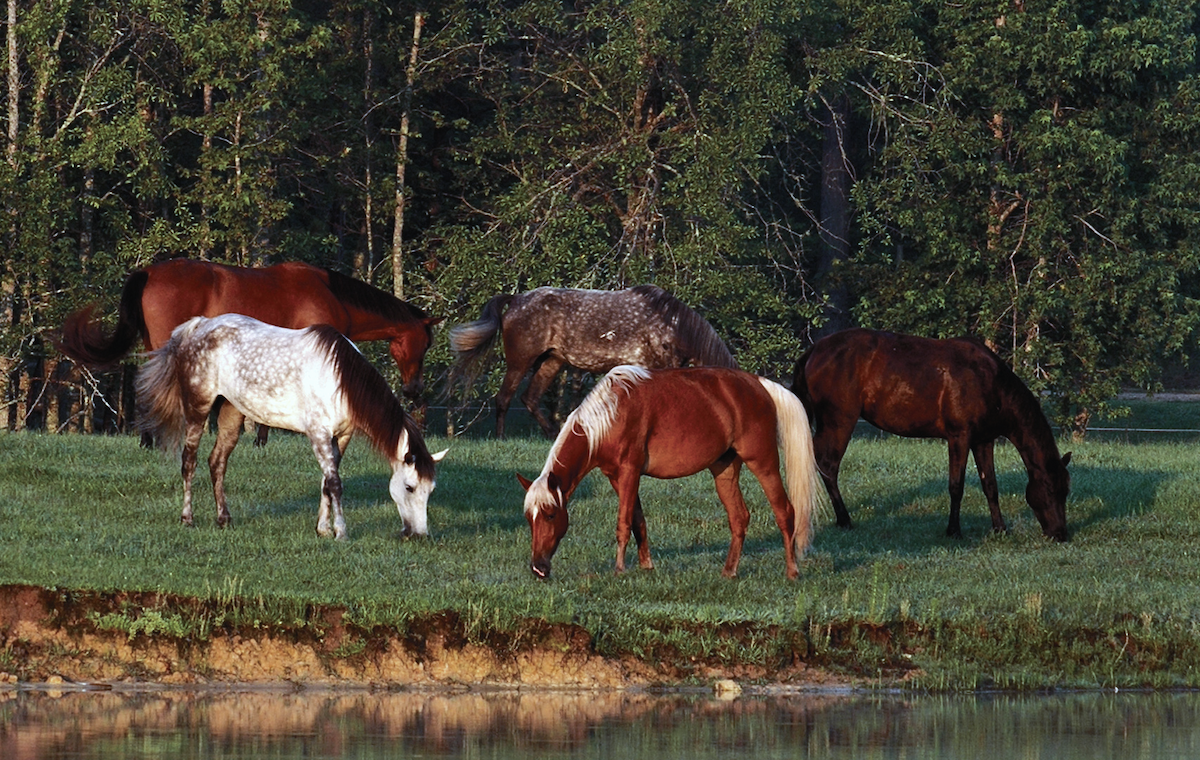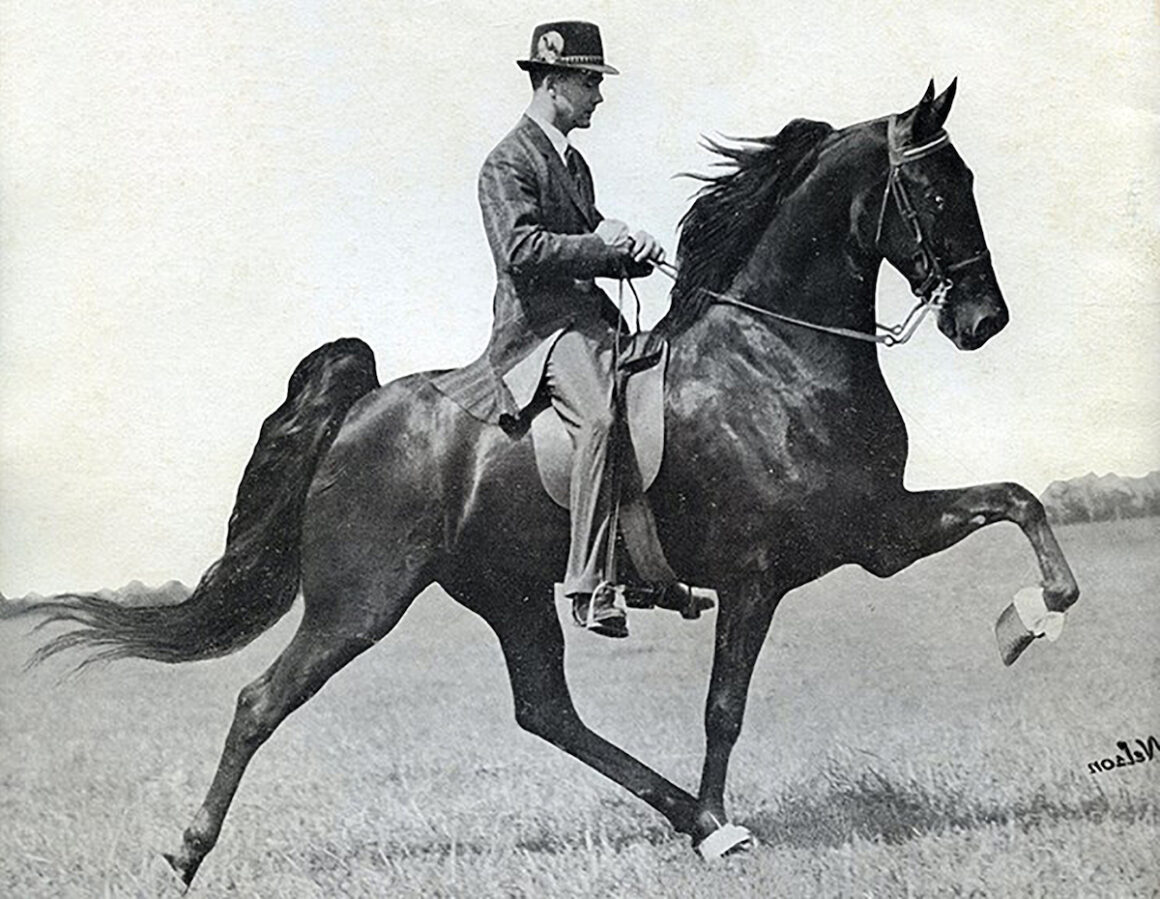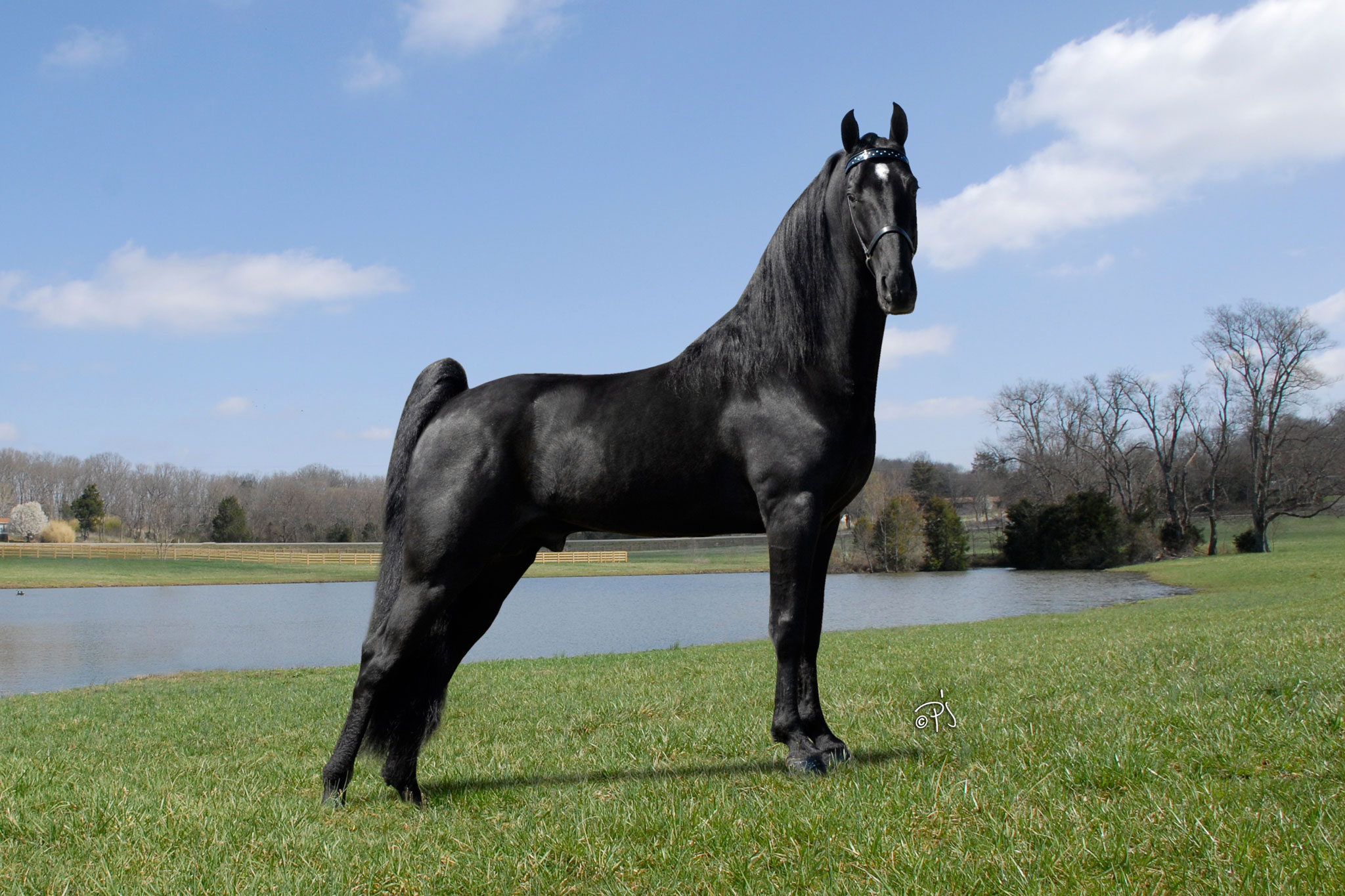Tennessee Walking Horses are famous for their running walk, a natural gait that only they perform. The breed has seen its share of heartbreak, but these kind and beautiful horses are persevering and delighting equestrians in the state of Tennessee and beyond.

A Tennessee Walking Horse moving in a running walk looks like it’s eating up the ground as it rolls by at an unbelievably quick pace. The large horses are bright-eyed and animated, with floating, effortless leg action.
As a teen, my favorite mount was a Tennessee Walking Horse named Whiskey. We’d go trail riding in the mountains and always headed down into a valley with a large open area where he could do his running walk before we took off at a full gallop. It was such fun! He was a brave and personable mount who gave me a deep, life-long love of this gorgeous breed.

History of the Tennessee Walking Horse
As the name implies, Tennessee Walking horses originated in the state of Tennessee. People from Virginia and the Carolinas began expanding into the area in the 1700s and 1800s. Middle Tennessee is a large area with all types of terrain. They took their horses with them because there was no other transportation. Middle Tennessee had numerous tobacco and cotton plantations in the early to mid-1800s, leading up to the Civil War.
The settlers and agricultural producers needed a horse that could carry them through the varied terrain and had the endurance to go longer distances to inspect vast fields of cotton and tobacco. Horses needed to be calm and patient, and able to pull a buggy with the family in it as well. The residents began breeding their own horses using the Morgan horses, Standardbreds, Thoroughbreds, and Saddlebreds they had brought to the area with them. Soon, a distinctive breed took shape – the Tennessee Walking Horse.
Breeders continued selecting for important characteristics: the smooth running walk, athletic ability, and docile temperament. The popularity of the breed grew with people discovering how tractable and useful the horses were. Tennessee Walking Horses were the preferred mount of doctors and traveling preachers. They started a breed organization in 1935. Allan was chosen as the founding sire of the breed. His selectors said he embodied all the best breed characteristics.

Breed Characteristics
The range of sizes and colors in Tennessee Walking Horses is vast, yet common breed characteristics make them recognizable. Horses can be anywhere from 14.3 to 17 hands high and range between 900 and 1,200 pounds. They come in all the standard colors including bay, chestnut, brown, and black. There are also grays, palominos, roans, and pintos. The breed has pretty heads and small ears.
Their smooth gait comes from the long, sloping shoulders and hips. Horses also have a fairly short back. The bottom line of the Tennessee Walking Horse is longer than their top line, and this means they have a long stride.
The breed is famous for three gaits, their natural walk, the running walk, and the canter. Horses in a running walk overstride. So, the back hoof is placed ahead of the front hoof print. The conformation of the horse and the long bottom line is one of the reasons this is possible.
Tennessee Walking Horses have a sweet and easygoing temperament. They are a joy to be around and very kind. Finally, they are safe for the smallest riders and extremely popular with returning and senior riders who need a smoother ride and a more forgiving horse that will remain calm and quiet. The horses inspire confidence in their riders.
The Running Walk
Tennessee Walking Horses are famous because of their running walk. They are born knowing how to running walk; horses inherit the gait. The running walk is a four-beat gait that feels similar to sitting on a glider. The horse’s head bobs and weaves with each step of the glide. A horse can travel six to 12 miles per hour at a running walk. Neither horses nor riders tire quickly in this efficient gait.
There are several variations of the running walk. For example, some horses step out in a fox-trot, a rack, a stepping-pace, or a single-foot. All these variations are smooth and comfortable. Recreational riders enjoy these variations, but the show ring does not call for these gaits.
Ethical Issues
Unfortunately, the story of the Tennessee Walking Horse has some troubling chapters where horses were not treated well. Competition can bring out the best or the worst in people, and as a result, the Tennessee Walking Horse has seen some of the worst.
Shows judge horses on their gaits. Naturally, the running walk carries a lot of weight on the way to winning a blue ribbon. Unscrupulous horse persons started using huge packages of shoes and pads to achieve what they call the “big lick” or extreme rolling action of the Tennessee Walking Horse’s gaits. Some also inflicted pain on the legs to create bigger action in the gait.
Consequently, lawsuits were filed to protect the horses. The United States Department of Agriculture, the American Veterinary Medical Association, and the American Association of Equine Practitioners have worked to reduce the mistreatment of Tennessee Walking Horses. Although there are still instances of ethical issues within the breed, the show horses’ situation is much improved. Both of these practices mentioned above are now illegal in the horse show world.
The Tennessee Walking Horse Today
Today’s Tennessee Walking Horse is a popular recreational mount and beloved by those who breed and own them. They participate in trail programs, sport riding including reining and western, jumping, youth programs, driving, and showing. In fact, one of the horses that played Trigger, Roy Rogers’ horse, was a Tennessee Walker.
Each year, Shelbyville, Tennessee hosts the National Celebration, a 10-day horse show where many from the breed compete as well as showcase their talent. More importantly, these kind and affectionate horses are in barns across the country every day, teaching people how to ride, helping them regain their confidence, or sharing the trail with a senior rider.
Sources: Tennessee Walking Horse Breeders’ and Exhibitors’ Association, National Walking Horse Association, Oklahoma State University, and the American Veterinary Medical Association.
